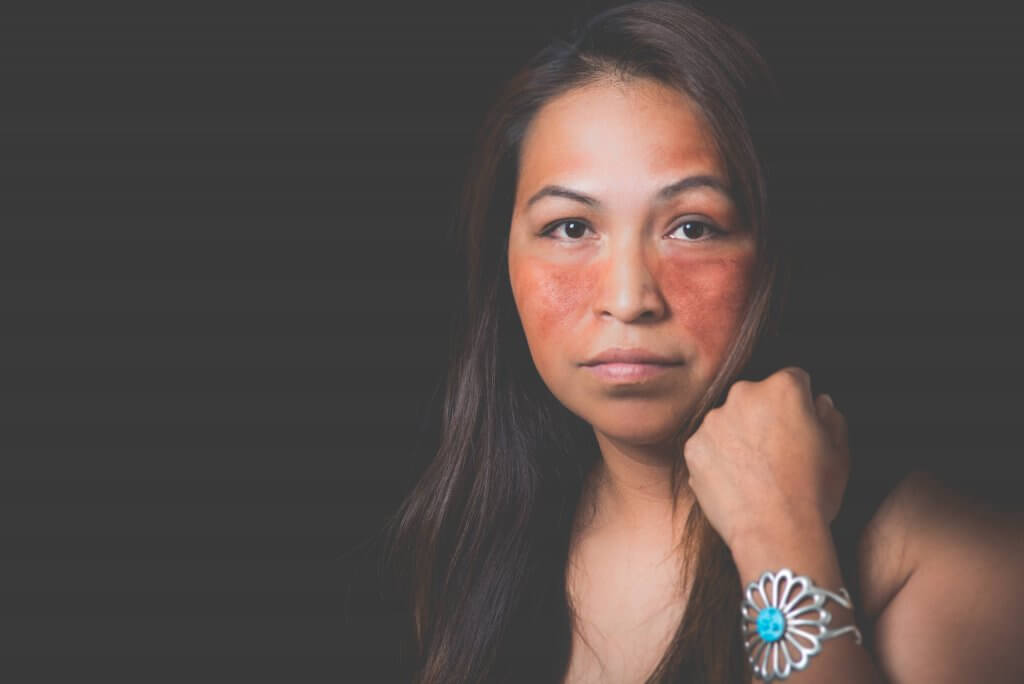Former airman Jeanita Kennedy helps fellow veterans cope with and overcome post-traumatic stress disorder through energy work and Navajo healing ceremonies.
The use of Complementary and Alternative Medicine — an umbrella term to describe healing approaches that are not standard practice in Western medicine — is becoming widespread among veterans suffering from PTSD, as reported by the U.S. Department of Veterans Affairs. In fact, out of the 599 veterans who were diagnosed with PTSD in 2013, 39% of them disclosed using alternative methods to address their symptoms.
CAM treatments include meditation, yoga, energy work and Native American healing rituals. Many can agree that Native Americans have always understood the importance of healing a warrior’s spirit from the poison of battle trauma, and they have done so through their holistic ceremonies.
Kennedy belongs to the Red Streak Clan of the Navajo Nation that the U.S. Census Bureau claims is home to over 7,500 veterans. After being raised on an Arizona Navajo reservation, she joined the Air Force and deployed to the Middle East multiple times before separating in 2008. Kennedy now lives in Minot, N.D., with her children and husband, who is in the Air National Guard.
During the interview, Kennedy spread her healing elements — satchels and feathers — across my dining table. She then took a small jar filled with red powder from her medicine bag.
“This is red sand from back home,” she explained. “I use it to draw red streaks on my cheeks and on the inside of my arms because I need it to protect myself from negative energy that might want to hurt me.”
Three years ago, Kennedy felt a sudden pain in both of her hands. “It was terrible, I was suffering very much from throbbing and stabbing pain that lasted three months.”
The pain interfered with her career as a well-known photographer who routinely had a waitlist of several months. She felt that she was one of the most sought-after photographers catering to the Minot Air Force Base community.
Soon after the pain started, Kennedy knew she was receiving the gift of healing. “I always knew I was gifted, as my ancestors were healers as well.”
Kennedy called her mother, who still lives on the Navajo reservation. “I told her I was going back home to see her so she could help me with the pain.”
Once there, her mother placed in front of her daughter ashes from a fire, Native American medicine bags and played Native American songs.
“OK, let’s see what is going on,” her mother said as they both closed their eyes. Suddenly, Kennedy’s hands started trembling uncontrollably.
“I heard the word ‘surrender’ inside of me. Then, my hand shot up high toward the sky.”
Soon after, she heard a voice say, “Welcome home.” She and her mother began crying. “The healer in me finally came out.”
Using Navajo healing to help military members
Even though Kennedy was happy to finally receive her gift, she wasn’t sure why the magical ability had been given to her if she no longer lived on the reservation. How could she use this gift with people who did not know much — if anything at all — about the Navajo medicine people? That’s when she realized she could use the healing practices to help the military community.
“I incorporated modern energy work into my Navajo healing technique, which is called hand trembling,” she explained. “It’s important that your body, mind and soul are properly aligned among themselves as well as with galactic energy. If they are not aligned, the person can suffer from severe consequences both physically and spiritually.”
Kennedy hopes to help alleviate the spiritual pain of military members who suffer from PTSD.
“People can be intuitive and empath, meaning they can sense energy, emotions, and even physical pain. As a result, they tend to accumulate energy they unconsciously took from other people and places,” she said. “Energy that does not belong to them. Yet, they carry it around as if it did. Unfortunately, all that energy often becomes too much to handle and that’s when some people choose to end their life.”
The Navajo healer says that becoming more aware of what energy is and how it works is crucial to one’s wellbeing, and she is on a mission to teach military members how to protect themselves from energy they might carry with them from their many deployments.
“Even land has energy and we have to show our respect if we want to no longer take its energy. We can touch it and whisper, ‘I am not here to add or to take away. I am here simply to experience you.’”
After streaking her face and arms with red sand, she placed several feathers and medicine bags in front of me, as she does with anyone she tries to heal. I sat before her, my eyes closed and palms facing up.
Kennedy began speaking in her native language, and I felt as if a vortex had taken over me. I became dizzy as if the whole room was spinning. Then, just as suddenly as it had started, it stopped. I felt at peace and tranquil. Like a ton of weight had been lifted off my shoulders
Once any healing ritual is performed, she says “Hózhó náhásdlíí,” which means “It will become beauty again.” A reminder that no matter what, change will always bring beauty with it, in every aspect of life.
Though limited research currently exists on CAM’s effectiveness, there is evidence to support that some approaches “have modest beneficial effects as a treatment for PTSD,” according to the National Center for PTSD, and several VA mental health programs include the use of CAM.
Visit the National Center for Complementary and Integrative Health for more information at https://nccih.nih.gov.

